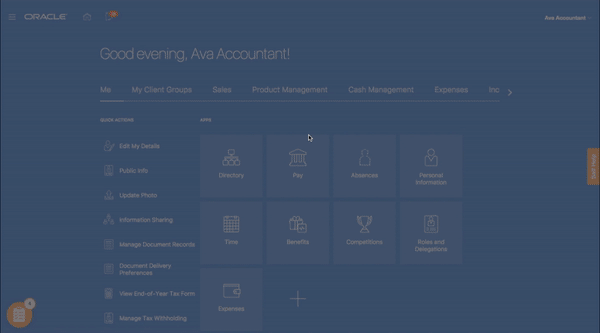

Adelina Karpenkova


Automation is a key component of digital transformation, impacting all industries, organizations, and departments. However, change fatigue, legacy software, and budget constraints slow down the needed HR transformation in your organization.
Have you automated your key HR processes yet? In this article, you’ll find a few convincing arguments for doing it as soon as possible, backed by real-world HR automation examples of how HR digitalization helps to automate your manual HR-related processes and tasks.
HR automation involves using technology to automate HR tasks to enhance your team’s productivity. Typically, automation affects repetitive processes such as recruitment, onboarding, performance analytics, and payroll processing.
There are a variety of tools that enable automation in different spheres of human resource management:
More often than not, you get access to a comprehensive toolkit in one end-to-end HR platform. For instance, BambooHR combines applicant tracking, employee onboarding, performance management, and payroll processing under one interface.
By using automation, HR teams can reduce manual data entry, minimize errors, and get a chance to focus on strategic tasks.
Should you spend time and resources automating your HR process? If you want to enjoy the following benefits, the short answer is “yes.”
One of the most significant HR challenges is HR teams spending hours performing manual tasks every day. Thirty-eight percent of the time your HR managers spend on routine tasks can be saved with automation.
HR automation helps you improve team efficiency, freeing up HR professionals to focus on tasks that require creativity and strategic thinking. With automation, your team is able to achieve more in less time.
It takes weeks (and sometimes months) to integrate a new hire into the organization. Without a centralized system, HR reps would need to offer new employees personal assistance throughout the process, wasting time they could have spent on more important tasks.
igital tools help create a smooth onboarding experience and make it possible to onboard new hires remotely. With automation software, you can set up a structured onboarding flow that every new employee goes through on their first days at work without the need for intervention from your HR department.
Reliable data insights may uncover patterns and trends in employee behavior, allowing HR teams to identify root causes of poor performance, high turnover rates, and other potential issues. However, your HR managers can’t collect and analyze big data manually. And this is where automation can help (again).
HR automation software analyzes data thoroughly and presents you with valuable insights, oftentimes filled with recommendations on what you should do next.
HR professionals manage relationships with a wide range of stakeholders, from employees and managers to recruiters and external vendors. It’s also their responsibility to connect everyone in the organization and build a ground for effective communication between managers and employees.
Technology provides HR teams helpful tools for sharing information, coordinating activities, and engaging with stakeholders. For example, after implementing an ATS, HR managers don’t need to spend time updating everyone involved on the application status — the stakeholders will see all the relevant information right in the system.
Employee engagement is the top priority for 38% of HR teams across the globe. Indeed, engaged employees are more productive and more likely to contribute to the overall success of the organization.
The good news is you can improve employee engagement through HR automation. For instance, by implementing an automated performance management system, you can provide regular feedback to your employees, providing them with opportunities for faster growth. When seeing that your organization cares about their career development, employees feel more valued and engaged at work.
Hr teams facing challenge in attracting and retaining talent is one of the most significant HR trends in today’s hybrid-driven labor market. Fostering automation of HR processes helps you increase employee retention by reducing administrative burdens and providing data-driven insights into workforce performance.
Automation makes a lot of things way simpler for your employees, thus creating better working conditions and lowering employee turnover. Also, HR automation provides easy access to employee performance data, allowing you to quickly spot early signs of employee frustration and address issues before they become more pressing.
Lastly, HR automation reduces the risk of data breaches, unauthorized access to sensitive information, and other security threats. Today’s HR software offers solutions for access controls and permissions, ensuring that only authorized individuals can access your data.pressing.
HR automation comes with certain challenges. Here are the most serious ones:
Continuous disruption from digital transformations, economic uncertainty, and political tensions can’t go unnoticed. Forty-five percent of HR leaders claim their employees are tired from all the changes their companies have been going through over the past years. And now, you need to offer a new initiative that will drastically change the way you work. No wonder your HR reps won’t be excited about the change at the beginning.
You can address this by involving employees throughout the process instead of simply telling them what will happen. Organizations that follow this approach are 14x times more likely to undergo change successfully.

Legacy software is one of the biggest problems for companies that haven’t embraced process automation yet. Although everyone understands these systems are slow and incompatible with modern software, they store so much data that it seems impossible to transfer it to a new automation solution.
You don’t have to replace the entire system in one sitting, though. Assess your current HR system and identify areas where HR automation can bring the most benefits. Step-by-step, you’ll upgrade your HR system and implement automation across all the repetitive tasks.
It’s also a good idea to bring a digital transformation consultant to help your team navigate the change.
Once a new system is set up, integrate it with a digital adoption platform like Whatfix to guide your team through the system’s peculiarities, features, and workflows. Whatfix will add product walkthroughs, tooltips, to-do lists, and other interactive elements on top of your HR software’s interface, allowing you to adopt a new system faster.


HR automation is a project that requires investing time and money. The question is, how do you find and allocate the budget for this project?
To overcome this roadblock, assess the costs of HR automation solutions and develop a realistic budget. You should be able to prioritize HR automation initiatives based on their potential return on investment and implement them in phases.
What exactly can you automate in your HR workflows? We’ve hand-picked a few ideas for you to get started with.
Digitalizing the recruiting process is always the first step to HR automation. Some examples of recruiting automation include.
Real-world example: Starling Bank implemented Workable, a recruitment platform, to scale hiring and create a fully remorse hiring environment. The company was able to build a highly efficient recruitment solution that included video interviews and self-scheduling options. As a result, Starling Bank grew from 50 to over 1,100 employees over the past five years.

Automation makes the employee onboarding process more effective by offering new hires fully digitalized onboarding experiences.
With automation software, HR reps don’t need to manually send new hire emails, closely supervise new hires, or walk them through their first days at work in person. You can set up a flow that does all of the above for you.
Real-world example: Whatfix implemented its own digital adoption platform to scale onboarding and strengthen remote company culture. The company set up in-app guidance, with custom task lists and self-help widgets, to walk new hires through their product without in-person onboarding. In doing so, Whatfix created a personalized onboarding experience for each new hire.

People analytics and reporting is another example of an HR process to automate. By automating the process, your HR team can easily generate reports and dashboards that provide valuable insights into key HR metrics such as employee turnover, absenteeism, and performance.
Real-world example: hipages, an online tradie marketplace, was looking to automate the entire people management process by implementing Bob, an all-in-one HR platform. One of the tasks hipages wanted to automate was creating reports for executives and the board. The people team needed a way to turn data into insights quickly and generate detailed reports for senior leaders. Today, the company uses technology to monitor and report on metrics such as new hires, attrition, time to hire, quality of hire, and diversity.

Skill gap analysis is the process of identifying the gap between the current skill levels of employees and the skills that your business needs for a specific project. Performing it manually is highly inefficient and time-consuming. You also can’t be sure you get reliable results.
To automate the process, HR teams often turn to artificial intelligence (AI) and machine learning algorithms. AI can analyze employee data, such as performance reviews, training records, and job history, to identify patterns in employee skills and reveal gaps.
Real-world example: AstraZeneca, a pharmaceutical company, uses machine learning to identify skill gaps and the capabilities they already have in the organization. By using Workday’s AI-powered solutions, AstraZeneca is able to quickly find talents they need to fill specific roles and identify skills they need to develop internally.

In-person training is no more a go-to option for remote-first organizations. Implementing an HR software is a must for remote organizations to deliver training to their geographically dispersed workforce.
You can use an automated learning management system (LMS) to develop an on-demand training program filled with various training techniques. You can also use the system to assess employees’ skills and identify areas where your staff needs additional training or coaching.
Real-world example: Roland, a manufacturer of musical instruments, delivers and administers sales team training through dedicated software. The company has implemented TalentLMS to create a fully digital training experience for their employees. The learning and development (L&D) team has managed to build an on-demand training program within a few weeks. From now on, Roland runs all sales training and assessment initiatives directly through the digital platform.

Automation software helps deliver fair and transparent reviews to your employees. With HR software, it’s easy to automate tasks such as goal setting, performance reviews, and feedback collection.
For example, you can set SMART goals and track employees’ progress toward those goals in your performance management system.
Real-world example: CHRONEXT, a retailer of luxury watches, was relying on the outdated, manual performance management process before adopting Leapsome’s feedback tool. The new solution has allowed the company to set up automated review cycles that use employee data to trigger specific actions (e.g., probation period reviews).

Automating benefit management will reduce the administrative burden on your HR team and eliminate costly errors.
The most common way to automate benefit management is through a benefits administration software. This type of software helps to automate the enrollment process, manage employee data and benefit plans, and track eligibility and coverage.
Real-world example: MMA Design, a provider of custom solutions for space missions, has implemented a benefits administration system to streamline the complicated benefits enrollment process and take the burden off their people team.
Prior to the change, the company was handling the process manually, which involved ever-lengthening email chains and text message threads. The new system includes self-service benefits selection for employees and a centralized database for the HR team.

HR automation can significantly improve HR process efficiency and boost employee engagement. But automation is impossible without the right software.
Implement a digital adoption platform such as Whatfix to navigate change and enable the adoption of HR automation software via personalized onboarding, in-app guidance and training, and real-time support that’s contextual to the role of each employee. It also delivers insights into the state of software adoption in your organization.
Schedule a free demo with us to learn more about how Whatfix can support your HR transformation initiatives.
Thank you for subscribing!